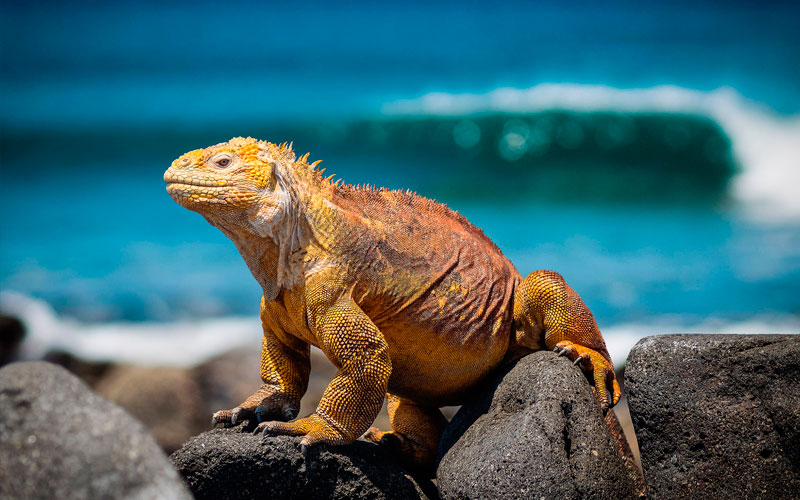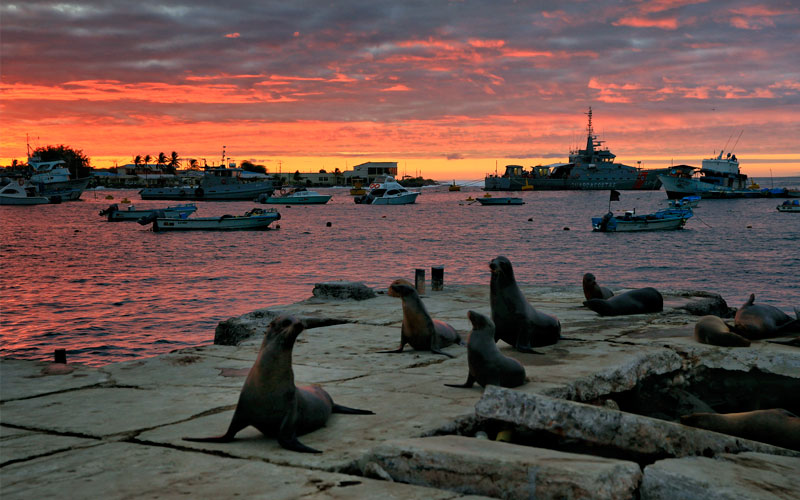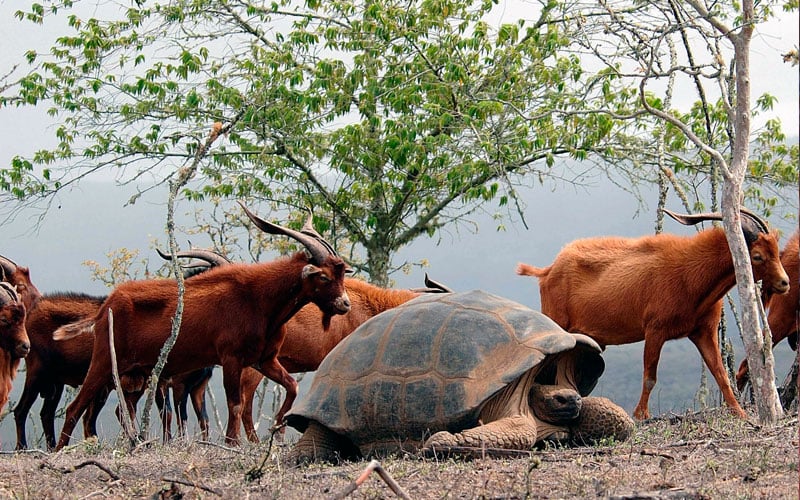The Galapagos Islands, located 1000km off the coast of Ecuador, have been known for their pristine environment and unique wildlife. These remote islands have been privileged with the seclusion that has allowed ecosystems to evolve in a rare and unmatched way.
However, today the islands are experiencing the effects of extreme weather events, introduced species, and a fast-growing population.
The endemic species to the Galapagos have survived in harmony for hundreds of years. In fact, as Darwin noted many species have become so secluded that they have evolved and adapted to the environments of individual islands. Darwin noticed this particularly with the Galapagos Finch, a bird whose beak, color, and size is different on each island.

You can see a large yellow land iguana on one island and a smaller, grayish land iguana on a different island.,
However, new species have been introduced to the islands and are disrupting the harmony of the endemic animals. Rats, goats, and wild dogs are among these species brought to the islands by humans. On Isabela Island, for example, some thousands of goats are destroying the tortoise population.
Another threat to the preservation of the islands is overpopulation. Humans have been living on the islands since the early 1800s, but recently the population among several of the islands has exploded.
The four inhabited islands of Isabela, Santa Cruz, San Cristobal, and Floreana are now home to over 40,000 people. Although human settlement is restricted to only 3% of the islands (97% of the archipelago is protected by the National Park), the effect that this growing population has on the islands is becoming perilous.
Extreme weather events have also taken a toll on the wildlife and environment. “El Niño” affects the islands every few years, raising the water temperature and increasing rainfall. Adverse effects of this phenomenon are perilous to marine life.
These threats to the Galapagos environment have become a serious issue and several organizations have now made it their mission to pursue Galapagos conservation projects. The Inter-institutional Committee for the Management and Control of Introduced Species, or CIMEI, is dedicated to controlling domestic animals and introduced species.
The Galapagos is a natural treasure; however, the beauty of these enchanted islands is in danger of being tarnished.
.

The Galapagos National Park and other organizations are working hard to preserve the integrity, beauty, and immaculacy of this UNESCO World Heritage Site.

